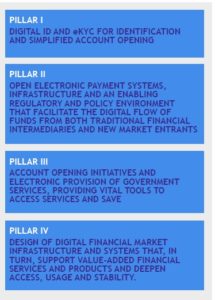Douglas W. Arner, The University of Hong Kong – Faculty of Law, Ross P. Buckley, University of New South Wales (UNSW) – Faculty of Law, Dirk A. Zetzsche, Universite du Luxembourg – Faculty of Law, Economics and Finance;
Abstract
Access to finance, financial inclusion and financial sector development have long been major policy objectives. A series of initiatives have aimed to increase access to finance and financial inclusion, but these have accelerated in the last decade as technological developments combined with strategic policy support show potential for progress beyond anything that has been achieved. The World Bank’s 2017 Global Findex shows that in the last three years, 515 million adults acquired a financial account, and between 2010 and 2017, 1.2 billion people opened an account with a formal financial institution or mobile financial services provider (including mobile money) for the first time. This is impressive progress by any measure, but much remains to be done: as of 2017, 1.7 billion people 16 years or older still did not have access to an account, some 31 percent of the world’s adult population.
We argue that to reap the greatest benefits for financial inclusion and maximize the potential of FinTech, a framework that supports infrastructure and an enabling policy and regulatory environment, built on a strong foundation of digital identification and electronic payment systems, will support much broader digital financial transformation. The full potential of FinTech for financial inclusion may be realized with a strategic framework of underlying infrastructure and an enabling policy and regulatory environment to support digital financial transformation.
Drawing from experiences in a range of developing, emerging and developed countries, our research suggests that the best approach is staged and progressive, and is focused on four main pillars.  1) The first pillar requires building digital identification and e-KYC systems to simplify access to the financial system. Once these are established for individuals and businesses, they provide a solid foundation not only for finance, but also for the development of the digital economy more broadly. 2) The second pillar requires digital payment infrastructure and open electronic payments systems, as these are the primary way to facilitate digital financial flows in an economy. 3) The third pillar combines the promotion of account opening and access with the electronic provision of government services, particularly for public transfers and payments, so as to scale up the use of digital finance and related services. By supporting access, payments and savings, together these three pillars provide a foundation for digital financial transformation and financial inclusion. 4) The fourth pillar – design of digital financial markets and systems – builds on the first three to support broader access to finance and investment, by underpinning use cases including securities trading, clearing and settlement, and other more sophisticated financial functions.
1) The first pillar requires building digital identification and e-KYC systems to simplify access to the financial system. Once these are established for individuals and businesses, they provide a solid foundation not only for finance, but also for the development of the digital economy more broadly. 2) The second pillar requires digital payment infrastructure and open electronic payments systems, as these are the primary way to facilitate digital financial flows in an economy. 3) The third pillar combines the promotion of account opening and access with the electronic provision of government services, particularly for public transfers and payments, so as to scale up the use of digital finance and related services. By supporting access, payments and savings, together these three pillars provide a foundation for digital financial transformation and financial inclusion. 4) The fourth pillar – design of digital financial markets and systems – builds on the first three to support broader access to finance and investment, by underpinning use cases including securities trading, clearing and settlement, and other more sophisticated financial functions.
There is a need for regulatory approaches that support and adapt to these four pillars. These regulatory changes are a major journey for any economy, but one that experience increasingly suggests has tremendous potential to transform financial inclusion and support digital economic development.
Access to the full paper here.





























